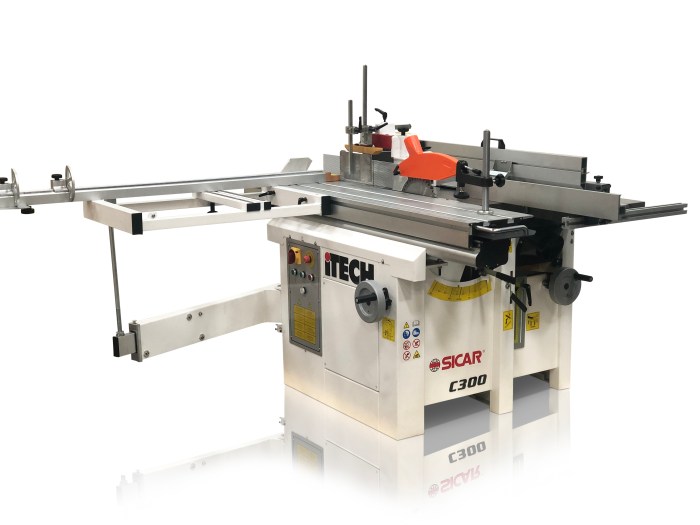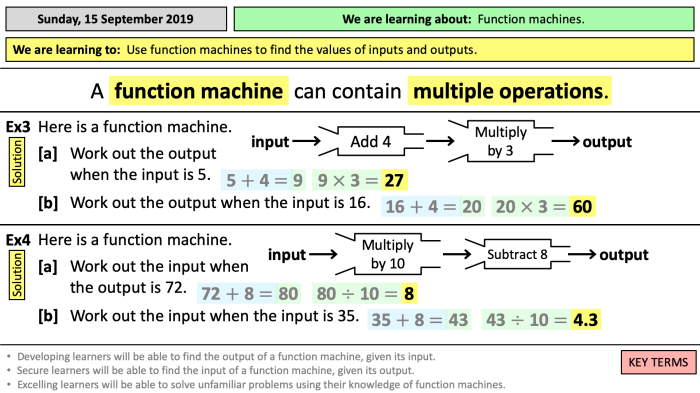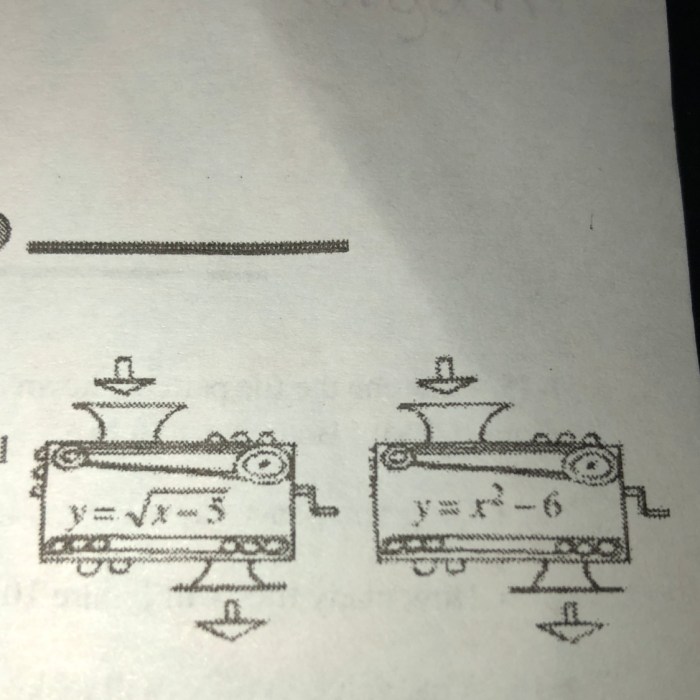Angelica is working with function machines – Angelica’s Function Machine Odyssey: Exploring the World of Mathematical Transformers
Function machines, mathematical marvels that transform inputs into outputs, lie at the heart of Angelica’s work. These versatile tools empower her to tackle complex tasks, solve real-world problems, and delve into the fascinating realm of mathematical modeling.
Understanding Function Machines

Function machines are mathematical tools that transform input values into output values according to a specific rule. They are represented using the notation f(x), where f is the function and x is the input variable. Different types of function machines include linear (f(x) = mx + b), quadratic (f(x) = ax^2 + bx + c), and exponential (f(x) = a^x).
Angelica’s Work with Function Machines, Angelica is working with function machines
Angelica utilizes function machines in her work as a data analyst. She uses linear functions to model relationships between variables, quadratic functions to predict growth patterns, and exponential functions to represent population growth or decay. By applying these functions, Angelica can make accurate predictions and identify trends in complex datasets.
Applications of Function Machines

Function machines have wide-ranging applications in various fields:
- Science:Modeling physical phenomena, such as projectile motion or chemical reactions.
- Engineering:Designing structures and systems, such as bridges or electrical circuits.
- Finance:Predicting stock prices or calculating loan payments.
Designing and Analyzing Function Machines

To design and analyze function machines:
- Identify the input and output variables:Determine the values that will be transformed.
- Choose an appropriate function:Select a function that best fits the relationship between the variables.
- Determine the parameters:Calculate the coefficients or constants in the function equation.
- Visualize the function:Plot the input-output pairs on a graph or create a table to visualize the behavior of the function.
Collaboration and Communication

Effective collaboration is crucial when working with function machines. Angelica collaborates with colleagues to share knowledge, validate results, and develop more accurate models. Clear communication is also essential to convey the results and insights derived from function machines to stakeholders.
FAQ Summary: Angelica Is Working With Function Machines
What are function machines?
Function machines are mathematical constructs that take an input value and produce a corresponding output value according to a defined rule or equation.
How does Angelica use function machines?
Angelica employs function machines to solve problems, model real-world phenomena, and analyze data. She leverages their ability to transform inputs into desired outputs, enabling her to derive meaningful insights and make predictions.
What are the benefits of using function machines?
Function machines offer numerous benefits, including the ability to simplify complex problems, automate calculations, and visualize mathematical relationships. They provide a powerful tool for understanding and predicting the behavior of systems across various disciplines.
